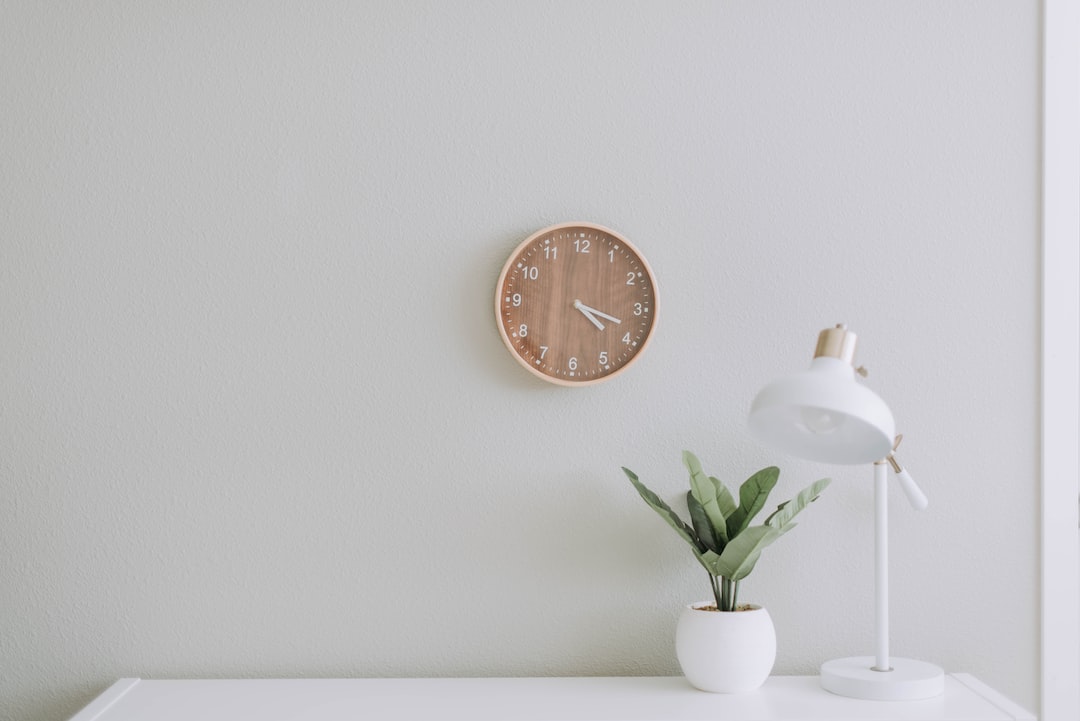Introduction: The Importance of DIY Home Repair Solutions
DIY home repair solutions are not only a great way to save money, but they also provide a sense of satisfaction and accomplishment. Being able to fix things on your own can give you a sense of empowerment and independence. Whether it’s a leaky faucet, a clogged drain, or a squeaky door, having the skills to tackle these common household problems can save you time and money in the long run.
One of the biggest benefits of DIY home repair solutions is the cost savings. Hiring a professional for every little repair can quickly add up, especially when you consider the cost of labor and materials. By learning how to fix things on your own, you can avoid these expenses and put that money towards other things. Additionally, DIY repairs can often be done with basic tools and materials that you may already have at home, further reducing costs.
Another advantage of DIY home repair solutions is the time savings. When you have the skills to fix things on your own, you don’t have to wait around for a professional to come and take care of the problem. Instead, you can address the issue immediately and get it resolved in a timely manner. This can be especially beneficial for urgent repairs, such as a leaky faucet or a clogged toilet.
Furthermore, there is a great sense of satisfaction that comes from fixing things on your own. Being able to identify and solve problems in your home can give you a sense of accomplishment and pride. It can also boost your confidence and make you feel more capable in other areas of your life. DIY home repair solutions allow you to take control of your living space and make it a better place for yourself and your family.
Tools and Materials You Need for DIY Home Repair
Before you can start tackling DIY home repairs, it’s important to have the right tools and materials on hand. While the specific tools you need will depend on the type of repair you’re doing, there are some basic tools that every homeowner should have in their toolbox.
Some essential tools for DIY home repairs include a hammer, screwdrivers (both flathead and Phillips), pliers, an adjustable wrench, a tape measure, a level, and a utility knife. These tools can be used for a wide range of repairs and are a good starting point for any DIY enthusiast.
In addition to basic tools, it’s also important to have essential materials for common repairs. For example, having a variety of screws, nails, and fasteners can come in handy when fixing loose or broken items. Duct tape and epoxy are also useful for temporary fixes until you can properly repair or replace something. It’s also a good idea to have a selection of adhesives, such as wood glue and super glue, for various projects.
Having a well-stocked toolbox and materials can make DIY home repairs much easier and more efficient. It allows you to quickly grab what you need without having to make multiple trips to the hardware store. By being prepared with the right tools and materials, you can save time and ensure that your repairs are done properly.
How to Fix a Leaky Faucet: Step-by-Step Guide
A leaky faucet is a common household problem that can waste water and increase your water bill. Fortunately, fixing a leaky faucet is a relatively simple DIY repair that can be done with just a few basic tools.
The first step in fixing a leaky faucet is identifying the problem. There are typically two main causes of a leaky faucet: a worn-out washer or an issue with the cartridge or valve. Once you’ve identified the problem, you can move on to the next step.
Before you start disassembling the faucet, it’s important to turn off the water supply. This can usually be done by shutting off the water valves located under the sink. Once the water supply is turned off, you can begin disassembling the faucet.
To disassemble the faucet, start by removing the handle. This can usually be done by unscrewing a small screw located on the underside of the handle. Once the handle is removed, you can access the cartridge or valve. Depending on the type of faucet you have, you may need to use a wrench or pliers to remove the cartridge or valve.
Once you have removed the damaged parts, you can replace them with new ones. It’s important to make sure you get the correct replacement parts for your specific faucet model. You can usually find this information in the owner’s manual or by doing a quick search online. Once you have the new parts, simply install them in reverse order of how you removed them.
After replacing the damaged parts, reassemble the faucet and turn on the water supply. Check for any leaks and make sure everything is working properly. If there are no leaks and the faucet is functioning correctly, then congratulations – you’ve successfully fixed a leaky faucet!
DIY Solutions for Clogged Drains and Toilets
Clogged drains and toilets are another common household problem that can be easily fixed with DIY solutions. There are several methods you can try before resorting to calling a plumber.
One of the most common DIY solutions for clogged drains and toilets is using a plunger. A plunger works by creating suction and pressure to dislodge whatever is causing the clog. To use a plunger, simply place it over the drain or toilet bowl and push down firmly, then pull up quickly. Repeat this motion several times until the clog is cleared.
If a plunger doesn’t work, you can try using a drain snake. A drain snake is a long, flexible tool that can be inserted into the drain to break up and remove clogs. To use a drain snake, insert it into the drain and rotate it clockwise while pushing it further into the pipe. Once you feel resistance, rotate the snake counterclockwise to break up the clog. Continue this motion until the clog is cleared.
If you prefer a more natural approach, you can make your own drain cleaner using ingredients you probably already have at home. One popular DIY drain cleaner recipe involves mixing equal parts baking soda and vinegar. Simply pour the baking soda down the drain, followed by the vinegar. Let it sit for a few minutes, then flush with hot water. The baking soda and vinegar will react to create a foaming action that can help break up clogs.
For clogged toilets, a toilet auger can be a useful tool. A toilet auger is a long, flexible tool with a coiled wire at one end. To use a toilet auger, insert the coiled end into the toilet bowl and rotate the handle clockwise while pushing it further into the pipe. Once you feel resistance, rotate the auger counterclockwise to break up the clog. Continue this motion until the clog is cleared.
By trying these DIY solutions for clogged drains and toilets, you can save money and avoid the hassle of calling a plumber. However, if these methods don’t work or if you’re dealing with a more serious plumbing issue, it’s best to call a professional.
Repairing Holes and Cracks in Drywall
Holes and cracks in drywall are common issues that can detract from the appearance of your home. Fortunately, repairing these imperfections is a relatively simple DIY project that can be done with just a few tools and materials.
The first step in repairing holes and cracks in drywall is preparing the damaged area. Start by removing any loose or damaged drywall around the hole or crack. Use a utility knife to cut away any loose edges and create a clean, even surface.
Once the damaged area is prepared, you can apply spackle or joint compound to fill in the hole or crack. Spackle is a lightweight, easy-to-use material that can be applied with a putty knife. Simply scoop some spackle onto the putty knife and spread it evenly over the damaged area. For larger holes or cracks, you may need to apply multiple layers of spackle, allowing each layer to dry before applying the next.
After applying the spackle, it’s important to sand and smooth the surface. Use a fine-grit sandpaper to gently sand the repaired area until it is smooth and flush with the surrounding wall. Be careful not to sand too aggressively, as this can damage the drywall.
Once the repaired area is smooth, you can paint over it to match the rest of the wall. Start by applying a primer to the repaired area, then follow with a coat or two of paint. Make sure to use the same type and color of paint that is already on the wall for a seamless finish.
By following these steps, you can easily repair holes and cracks in drywall and restore the appearance of your walls. This DIY project requires minimal tools and materials and can be completed in just a few hours.
Fixing Squeaky Doors and Windows
Squeaky doors and windows can be annoying and disruptive, but fortunately, they are often easy to fix with DIY solutions. The first step in fixing squeaky doors and windows is identifying the source of the noise.
In many cases, squeaky doors are caused by hinges that need lubrication. To fix this issue, start by opening and closing the door to pinpoint which hinge is causing the noise. Once you’ve identified the squeaky hinge, apply a lubricant such as WD-40 or silicone spray directly onto the hinge pins. Move the door back and forth several times to distribute the lubricant and work it into the hinge. This should help reduce or eliminate the squeaking noise.
If lubricating the hinges doesn’t solve the problem, the issue may be with the door frame or latch. In this case, you can try tightening any loose screws or replacing damaged parts. Use a screwdriver to tighten any loose screws on the door frame or latch. If the latch itself is damaged, you may need to replace it with a new one.
For squeaky windows, the source of the noise is often the tracks or hinges. Start by cleaning the tracks and hinges to remove any dirt or debris that may be causing friction. Use a soft brush or cloth to remove any buildup, then apply a silicone-based lubricant to the tracks and hinges. Move the window back and forth several times to distribute the lubricant and work it into the tracks. This should help reduce or eliminate the squeaking noise.
If lubricating the tracks and hinges doesn’t solve the problem, there may be an issue with the window frame or hardware. In this case, you can try tightening any loose screws or replacing damaged parts. Use a screwdriver to tighten any loose screws on the window frame or hardware. If the hardware itself is damaged, you may need to replace it with new hardware.
By identifying and addressing the source of the noise, you can easily fix squeaky doors and windows and restore peace and quiet to your home.
How to Replace a Broken Light Fixture or Switch
Replacing a broken light fixture or switch is another DIY home repair that can be done with just a few tools and materials. However, it’s important to note that working with electricity can be dangerous, so it’s crucial to take proper safety precautions.
The first step in replacing a broken light fixture or switch is turning off the power supply. This can usually be done by flipping the circuit breaker that controls the area where you’ll be working. It’s a good idea to use a voltage tester to double-check that the power is off before proceeding.
Once the power is off, you can remove the old light fixture or switch. Start by removing the cover plate or canopy that is covering the wiring. Use a screwdriver to loosen and remove any screws holding the fixture or switch in place. Carefully disconnect the wires from the old fixture or switch, making note of which wires are connected to which terminals.
After removing the old fixture or switch, you can install the new one. Start by connecting the wires from the new fixture or switch to the corresponding wires in the electrical box. This is usually done by twisting together the matching colored wires and securing them with wire nuts. Make sure all connections are secure and there are no exposed wires.
Once the new fixture or switch is wired correctly, you can attach it to the electrical box using screws. Make sure it is securely fastened and aligned properly. Replace the cover plate or canopy and tighten any screws.
Before turning the power back on, it’s important to test the new fixture or switch to make sure it is working properly. Turn on the power supply and flip the switch or turn on the light to check for any issues. If everything is working correctly, then congratulations – you’ve successfully replaced a broken light fixture or switch!
DIY Solutions for Damaged Flooring and Tiles
Damaged flooring and tiles can be unsightly and pose a safety hazard, but fortunately, there are DIY solutions that can help you repair these issues without having to replace the entire floor.
For scratches and dents in hardwood floors, there are several methods you can try to repair them. One simple DIY solution is using a crayon or marker that matches the color of your floor. Simply color in the scratch or dent with the crayon or marker, then use a clean cloth to buff away any excess color. This can help camouflage the damage and make it less noticeable.
If the scratch or dent is deeper, you can try using a wood filler. Wood filler is a putty-like substance that can be applied to damaged areas to fill in gaps and create a smooth surface. Start by cleaning the damaged area and removing any dirt or debris. Apply the wood filler to the scratch or dent, then use a putty knife to smooth it out and remove any excess. Allow the wood filler to dry completely, then sand it down until it is flush with the surrounding floor. Finish by applying a coat of stain or sealant to match the rest of the floor.
For damaged tiles, the best solution is often to replace them. Start by removing the damaged tile using a chisel and hammer. Carefully chip away at the grout surrounding the tile until you can lift it out. Clean the area and remove any remaining grout or adhesive.
Once the area is prepared, you can install the new tile. Apply a thin layer of tile adhesive to the back of the tile, then press it firmly into place. Use spacers to ensure even spacing between tiles. Allow the adhesive to dry completely, then apply grout to fill in the gaps between tiles. Use a grout float to spread the grout evenly and remove any excess. Allow the grout to dry, then wipe away any haze with a clean cloth.
For loose or squeaky floorboards, there are several methods you can try to fix them. One simple DIY solution is using screws to secure loose boards. Start by locating the loose boards and determining the best placement for screws. Use a drill to create pilot holes slightly smaller than the screws. Then, carefully insert the screws into the pilot holes, making sure they are flush with the surface of the floorboard. This will help secure the loose boards and prevent them from moving or squeaking. Another option is to use adhesive or construction adhesive to glue the loose boards back in place. Apply a generous amount of adhesive to the underside of the board and press it firmly onto the subfloor. Allow the adhesive to dry completely before walking on the repaired area. If these methods do not work, it may be necessary to consult a professional for further assistance.
If you’re looking for tips on how to save money on your bathroom renovation, check out this helpful article from Comely Style. It provides practical advice and cost-saving strategies to help you achieve your dream bathroom without breaking the bank. From choosing affordable materials to DIY projects, this article covers it all. So, if you’re planning a bathroom renovation, be sure to give it a read! Read more





